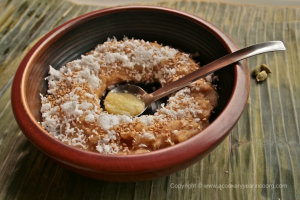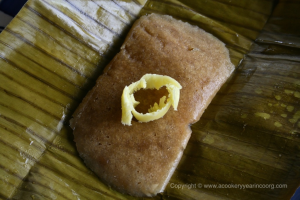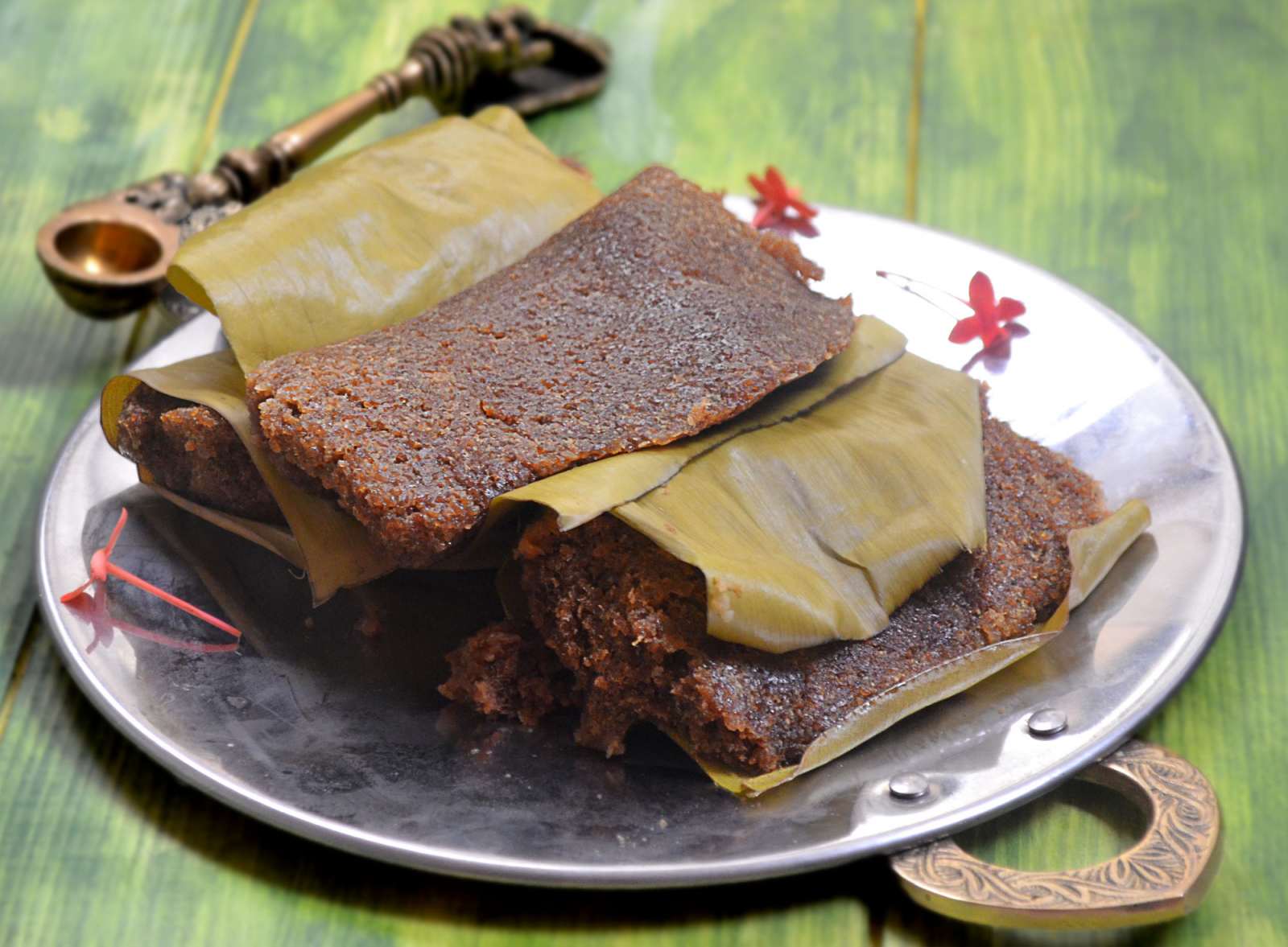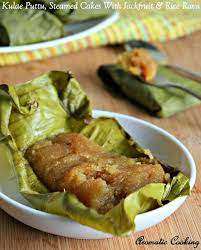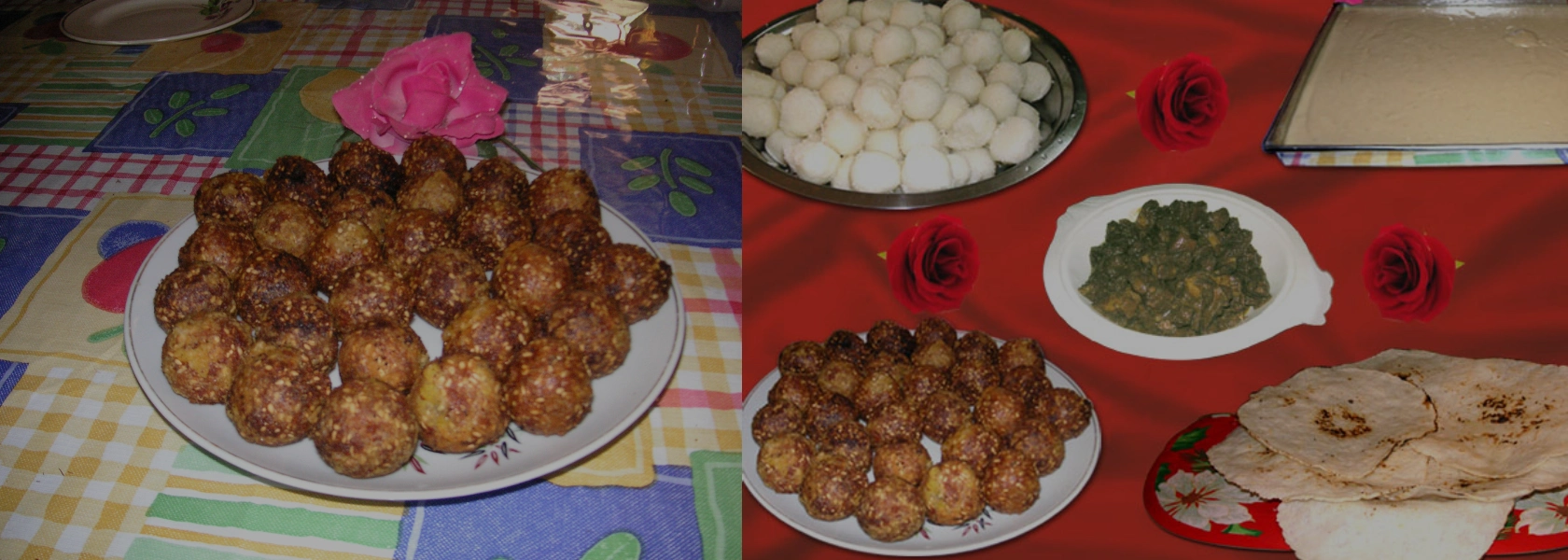
Recipies
Kulae Puttu (Sweet Steamed Cakes of Jackfruit or Banana) by Shalini Nanda
• Sweet steamed cakes of jackruit or banana
• 300 gms raw rice, soaked for 6-8 hours or the equivalent amount of fine thari, soaked for 1 hour
• You can also use suji/rava (or try cream of wheat or a soft wheat semolina) but the texture will be more grainy than that of kulae puttu made with soaked and ground rice
• 500 gms jackfruit pulp or ripe banana pulp
• 1/2 coconut – 1/4 to be grated and the rest sliced into thin slivers about 1 cm long
• 1/4 tsp baking soda (optional). It makes for a less dense cake, but I prefer the version without
• 200 gms jaggery or to taste (check how sweet the jackfruit or banana is before adding more)
• If you’re using banana pulp, add a little ground cardamom to the mixture
• A pinch of salt
• 25 pieces of banana leaf, of about 8″x 6″
Banana leaves need to be heated briefly to soften them and make them flexible enough to fold without breaking. This can be done by pressing them on a heated griddle, passing them gently over a flame, or, as I do, tossing them in a hot oven briefly!
Grind the soaked rice to a smooth paste with a little water.
Combine the ground rice with the jaggery, jackfruit pulp, coconut, salt, and baking soda if you’re using it. Mix thoroughly. You should have a soft, moist batter that is thick enough to spoon into the banana leaves without being too runny.
Place two tablespoons of the batter in the centre of a banana leaf wrapper and fold gently into a rectangular parcel. Have your sekala ready with water at a simmer and layer the parcels in as you prepare them. When they’re all done, cover and steam on medium-high for about 30 minutes.
Remove the lid of the steamer and allow them to cool a little before tucking in. Kulae puttu tastes wonderful with a dab of fresh butter or ghee. Day old kulae puttu tastes delicious seared in a little ghee and dished up for breakfast or as a teatime treat.
Gallery
Categories
Food Recipies you may like
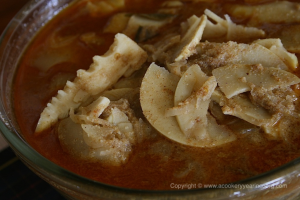
Baimbalé curry by Shalini Nanda
Learn more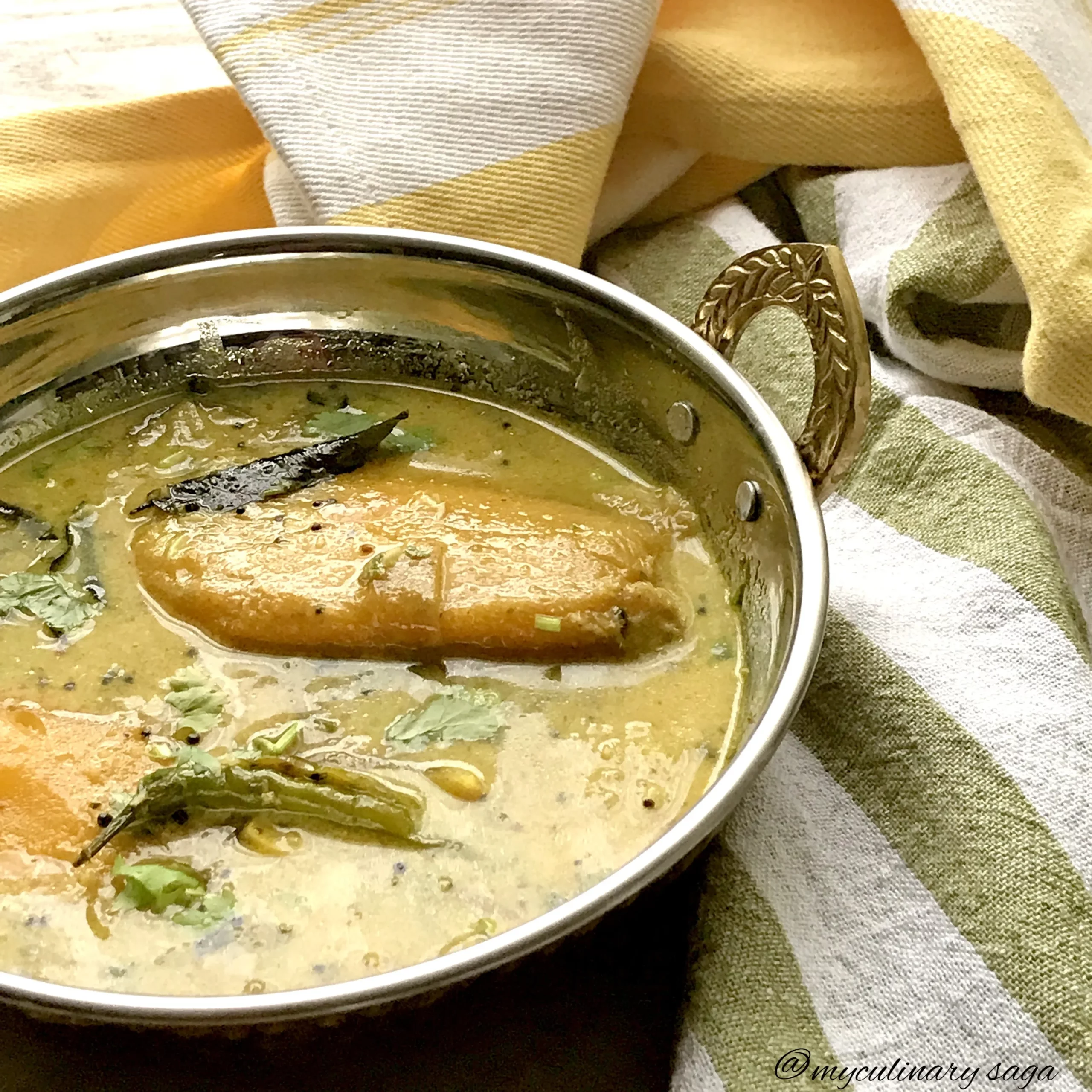
Kaad Maange Curry by Shalini Nanda
Learn more